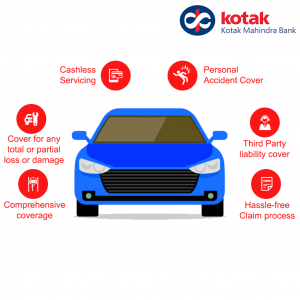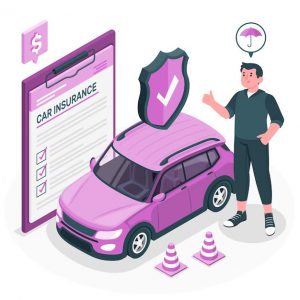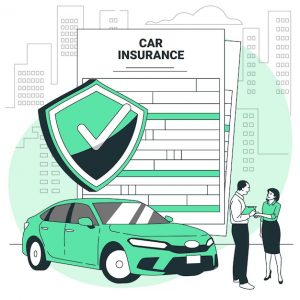Car Insurance Add-ons Guide
Car insurance is a crucial aspect of owning and driving a vehicle, providing financial protection in the event of accidents, theft, or other unforeseen incidents. While standard car insurance policies cover the basics, there are various add-ons or riders available to enhance coverage and tailor it to specific needs. In this comprehensive guide, we will delve into each of these add-ons, exploring their benefits and how they can safeguard both your vehicle and your peace of mind.
1. Zero Depreciation Cover:
The Zero Depreciation Cover acts as a superhero for your car’s value, ensuring that you receive a better claim amount by eliminating the impact of depreciation on your car parts. This add-on is particularly advantageous for vehicles up to five years old, offering policyholders the benefit of unlimited claims. We will explore how zero depreciation cover works, its limitations, and why it is an essential consideration for car owners seeking comprehensive protection.
Here’s how a Zero Depreciation Cover works:
- Elimination of Depreciation: With a Zero Depreciation Cover, the insurance company waives off the depreciation factor, meaning that the policyholder is eligible for a claim amount without any deduction for depreciation.
- Higher Claim Amount: As a result of the elimination of depreciation, the policyholder can receive a higher claim amount that more accurately reflects the current market value of the damaged car parts. This is particularly beneficial for new or relatively new cars.
- Ideal for New Cars: Zero Depreciation Covers are most commonly recommended for new cars or cars up to five years old. Newer vehicles tend to have higher repair costs, and the impact of depreciation is more significant in the initial years.
- Multiple Claims: Some insurance providers offer the flexibility of multiple claims under the Zero Depreciation Cover during the policy period, providing additional financial protection for the policyholder.
2. Engine Protection Cover:
Engine troubles can lead to significant repair costs. The Engine Protection Cover comes to the rescue by covering damages to your car’s engine caused by water, oil spills, or breakdowns. This section will delve into the common causes of engine damage, how this add-on provides financial assistance for repairs or replacements, and why it is ideal for cars up to five years old.
Here are key features and aspects of Engine Protection Cover:
- Coverage for Engine Damage: Engine Protection Cover is primarily focused on providing coverage for damages to the insured vehicle’s engine. Covered incidents may include water ingress, damage from oil spills, and engine breakdowns. These events are typically excluded or have limited coverage in standard car insurance policies.
- Financial Assistance for Repairs or Replacements: In the event of engine damage covered by the policy, Engine Protection Cover ensures that the policyholder receives financial assistance for the necessary repairs or even the replacement of the damaged engine. Engine repairs can be expensive, and this add-on helps mitigate the financial burden on the policyholder.
- Ideal for Cars up to Five Years Old: Engine Protection Cover is often recommended for relatively newer vehicles, typically up to five years old. This is because newer cars are more likely to experience engine-related issues due to manufacturing defects or wear and tear.
- Exclusions and Limitations: Like any insurance coverage, Engine Protection Cover comes with certain exclusions and limitations. It’s essential for policyholders to carefully review the terms and conditions of the add-on to understand the specific scenarios in which the coverage applies and any situations that may be excluded.
- Complementary to Regular Comprehensive Coverage: Engine Protection Cover is usually an add-on to a comprehensive car insurance policy. It complements the existing coverage by addressing a specific vulnerability that standard policies may not adequately cover.
- Premium Considerations: Including Engine Protection Cover in a car insurance policy typically results in a slightly higher premium. However, this additional cost is often justified by the potential savings in the event of engine-related damages.
3. No Claim Bonus Protection Cover:
The No Claim Bonus (NCB) Protection Cover is designed to safeguard your accumulated rewards even if you make a claim in the last policy year. We will explore the mechanics of NCB, how it influences premiums, and how this protection cover empowers policyholders to maintain their NCB even after filing a claim.
Here are the key features and aspects of the No Claim Bonus Protection Cover:
1. Preservation of No Claim Bonus: The primary purpose of NCB Protection Cover is to safeguard the policyholder’s accumulated No Claim Bonus, even if a claim is made during the last policy year. Typically, if a policyholder makes a claim, the NCB is reset to zero or reduced, leading to a higher premium during the next renewal. NCB Protection Cover ensures that this discount remains intact despite a claim being filed.
2. Protection Against Premium Increase: Making a claim on a standard car insurance policy can lead to a reduction or complete loss of the No Claim Bonus, resulting in a higher premium at the time of renewal. With NCB Protection Cover, policyholders can avoid the potential increase in the renewal premium, making it a cost-effective option in the long run.
3. Applicability to Own-Damage Premiums: NCB Protection Cover typically applies to the own-damage component of the car insurance policy. This means that it protects the NCB specifically related to damages to the insured vehicle, excluding any claims related to third-party liability.
4. Eligibility Criteria: To avail of NCB Protection Cover, policyholders must fulfill certain eligibility criteria, such as having a minimum specified NCB percentage at the time of purchasing the cover. The availability of this add-on may vary among insurance providers, and policyholders should check with their insurer for specific requirements.
5. Effect on NCB Scale: While NCB Protection Cover ensures that the existing NCB is preserved, it may not prevent the reduction of the NCB scale. The NCB scale determines the percentage of discount applicable to the premium, and making a claim may still affect the scale even if the bonus amount is protected.
6. Claim Limitations: There may be limitations on the number of claims a policyholder can make while retaining the NCB. While the protection cover provides a safety net for occasional claims, frequent claims may still impact the bonus.
4. Roadside Assistance Cover:
Being stuck on the road can be a stressful situation. The Roadside Assistance Cover acts like a superhero mechanic on speed dial, providing on-the-spot help for issues like flat tires, minor repairs, and towing. We will discuss the extensive services offered under this cover, its advantages, and why it is a valuable addition to any car insurance policy.
5. Return to Invoice Cover:
Worried about the depreciated value of your car affecting your claim? The Return to Invoice Cover ensures policyholders receive the invoice value of their car in case of total loss, theft, or constructive total loss. We will examine how this add-on works, its significance in preserving a vehicle’s value, and why it is crucial for those concerned about potential financial losses.
6. Daily Allowance Cover:
When your car is in the garage for repairs, the Daily Allowance Cover steps in to cover your travel expenses. We will discuss how this cover compensates for daily travel expenses, the conditions under which it applies, and why it can be a budget-friendly option for policyholders during the repair period.
Here are the key features and aspects of Daily Allowance Cover:
1. Coverage for Daily Travel Expenses: The primary purpose of Daily Allowance Cover is to compensate the policyholder for daily travel expenses when their insured vehicle is undergoing repairs at a network garage. These expenses may include the cost of alternative transportation such as hiring a cab, using public transportation, or renting a vehicle.
2. Budget-Friendly Repairs: When a car is involved in an accident or faces damages covered by the policy, it often needs to be taken to a garage for repairs. During this period, the policyholder might need to rely on alternative means of transportation, incurring additional daily expenses. The Daily Allowance Cover helps offset these costs, making the repair process more budget-friendly.
3. Network Garage Requirement: Daily Allowance Cover typically applies when the insured vehicle is being repaired at a network garage affiliated with the insurance provider. Network garages are workshops or service centres that have a tie-up with the insurer, ensuring a streamlined claims process and often providing additional benefits such as cashless repairs.
4. Fixed Daily Allowance: The cover offers a fixed daily allowance amount to the policyholder for the specified number of days the car is in the garage for repairs. The daily allowance is predetermined and mentioned in the policy documentation.
5. Limited Duration: Daily Allowance Cover has a specific time limit or duration for which the daily allowance is applicable. This duration is typically linked to the estimated time required for the repairs. Once the vehicle is repaired and back on the road, the daily allowance ceases.
6. Documentation Requirements: Policyholders may need to provide documentation such as receipts or bills for alternative transportation expenses to claim the daily allowance. It’s important to keep records of these expenses to facilitate a smooth claims process.
7. Additional Cost: Including Daily Allowance Cover in a car insurance policy usually results in a slightly higher premium. The additional cost is justified by the financial assistance it provides during the inconvenience of having the insured vehicle in the garage for repairs.
Car Insurance Add-ons Guide
Car insurance is a crucial aspect of owning and driving a vehicle, providing financial protection in the event of accidents, theft, or other unforeseen incidents. While standard car insurance policies cover the basics, there are various add-ons or riders available to enhance coverage and tailor it to specific needs. In this comprehensive guide, we will delve into each of these add-ons, exploring their benefits and how they can safeguard both your vehicle and your peace of mind.
7. Passenger Cover:
Regular insurance policies often don’t cover passengers’ medical expenses. The Passenger Cover provides extra safety by covering medical costs for passengers in the event of an accident. We will explore the importance of this cover, the scenarios it applies to, and how it ensures additional protection for both the policyholder and their passengers.
8. Consumables Cover:
During car repairs, various consumables such as nuts, bolts, and lubricants are used. The Consumables Cover reimburses expenses for these items but is available only for cars under five years old. We will delve into the details of consumables cover, its limitations, and why it can be a helpful add-on for cost-conscious car owners.
Here are the key features and aspects of Consumables Cover:
1. Reimbursement for Consumable Items: Consumables are items that are used during the repair or maintenance of a vehicle and are expected to be replaced periodically. This can include items such as nuts, bolts, screws, washers, lubricants, engine oil, coolant, brake oil, and other similar components.
2. Expense Coverage During Repairs: When a car undergoes repairs due to an accident or covered event, Consumables Cover ensures that the policyholder is reimbursed for the cost of consumable items that are used during the repair process. These items are in addition to the repair costs for the damaged parts.
3. Applicability to Cars Under Five Years Old: Consumables Cover is typically available for cars that are under five years old. This is because newer cars are more likely to require consumable items replacement during repairs, and the cost of these items can be higher for newer vehicles.
4. Limitations and Coverage Conditions: Like any insurance coverage, Consumables Cover may have limitations on the types of consumables covered, and there could be conditions specifying when the coverage is applicable. It’s important for policyholders to understand these terms to ensure that the coverage meets their needs.
5. Cost Considerations: Including Consumables Cover in a car insurance policy usually results in a slightly higher premium. However, the additional cost is often justified by the potential savings in the event of repairs, as the cost of consumables can add up, especially in the case of accidents or significant damages.
6. Network Garage Requirement: Consumables Cover may have a requirement that the repairs are carried out at a network garage affiliated with the insurance provider. Network garages often have agreements with insurers, which can streamline the claims process and may provide additional benefits such as cashless repairs.
7. Claim Process: To make a claim under Consumables Cover, policyholders may need to provide documentation such as invoices or receipts for the consumable items used during the repair process.
9. Tyre Protect Cover:
Tyre damages can be a common concern for car owners. The Tyre Protect Cover steps in to pay for the repair or replacement of damaged tyres. This section will explore the significance of this cover, the types of tyre damage it addresses, and why it is a valuable addition to comprehensive car insurance.
10. Key Replacement Cover:
Losing car keys can be a frustrating experience. The Key Replacement Cover reimburses expenses for replacing lost, stolen, or damaged keys, including repairs to the lock-set. We will discuss the scenarios covered by this add-on, the reimbursement process, and why it offers peace of mind for car owners.
Here are the key features and aspects of Key Replacement Cover:
1. Reimbursement for Lost, Stolen, or Damaged Keys: Key Replacement Cover provides reimbursement for the costs incurred in replacing lost, stolen, or damaged car keys. This can include expenses for obtaining a new key, reprogramming electronic keys, and, in some cases, replacing the entire lock-set if necessary.
2. Coverage for Lock-Set Repair: In addition to covering the replacement cost of keys, the Key Replacement Cover may extend to cover the repair or replacement of the lock-set. This is particularly relevant when the loss or damage to keys also involves potential damage to the car’s ignition or door locks.
3. Coverage for Stolen Keys: If the insured car keys are stolen, Key Replacement Cover typically provides coverage for the replacement of keys and locks. This is important, as stolen keys can pose a security risk, and replacing them promptly is essential.
4. Reprogramming Electronic Keys: Many modern vehicles come equipped with electronic keys or key fobs. Key Replacement Cover often includes coverage for the costs associated with reprogramming or replacing electronic keys, which can be more expensive than traditional keys.
5. Documentation Requirements: To make a claim under Key Replacement Cover, policyholders may need to provide documentation such as a police report (in the case of stolen keys), receipts for the replacement keys, and any other relevant documentation.
6. Coverage Limits: Like any insurance coverage, Key Replacement Cover may have certain limits on the amount that can be claimed. Policyholders should be aware of these limits and ensure that the coverage aligns with the potential costs of key replacement and related expenses.
7. Additional Cost: Including Key Replacement Cover in a car insurance policy typically results in a slightly higher premium. However, the additional cost is often justified by the potential savings in the event of key-related issues.
11. Loss of Personal Belongings Cover:
Personal items stolen from your car can lead to emotional and financial distress. The Loss of Personal Belongings Cover compensates for the loss and any damages to personal belongings, including electronic equipment. We will explore the coverage provided by this add-on, the documentation required for claims, and why it is a valuable inclusion in car insurance policies.
In conclusion, these car insurance add-ons or riders offer a range of benefits, providing policyholders with enhanced protection and peace of mind. By understanding the specifics of each cover, car owners can make informed decisions when customizing their insurance policies to suit their unique needs. Whether it’s preserving the value of the vehicle, safeguarding against unexpected repairs, or ensuring the well-being of passengers, these add-ons contribute to a comprehensive and tailored approach to car insurance.
Frequently Asked Questions About Car Insurance Add-Ons
Q1. What is a Zero Depreciation Cover, and is it worth adding to my car insurance policy?
A1. A Zero Depreciation Cover is an add-on that eliminates the impact of depreciation on your car’s value during a claim. It is particularly beneficial for new or relatively new cars, ensuring you receive a higher claim amount. It’s worth adding if you want to safeguard your vehicle’s value and are willing to pay a slightly higher premium.
Q2. How does the Engine Protection Cover work, and when is it recommended?
A2. Engine Protection Cover provides financial assistance for damages to your car’s engine caused by water, oil spills, or breakdowns. It is recommended for cars up to five years old, offering coverage for significant repair costs. If you want extra protection against engine-related issues, this add-on is worth considering.
Q3. What is the No Claim Bonus Protection Cover, and how does it benefit policyholders?
A3. The No Claim Bonus (NCB) Protection Cover preserves your accumulated NCB even if you make a claim in the last policy year. It safeguards against a potential increase in the renewal premium after a claim, making it a cost-effective option. This cover applies to own-damage premiums and empowers policyholders to maintain their NCB discount.
Q4. Is the Daily Allowance Cover necessary, and when does it come into play?
A4. Daily Allowance Cover is beneficial when your car is being repaired at a network garage. It compensates for daily travel expenses, providing financial assistance for alternative transportation. While not essential, it can be a budget-friendly option during the inconvenience of having your car in the garage for repairs.
Q5. What does Key Replacement Cover include, and when should I consider adding it to my policy?
A5. Key Replacement Cover reimburses expenses for replacing lost, stolen, or damaged keys, and it may also cover lock-set repairs. It is worth considering if you want peace of mind in case of key-related issues. This add-on is particularly useful for those with modern vehicles equipped with electronic keys or key fobs.











